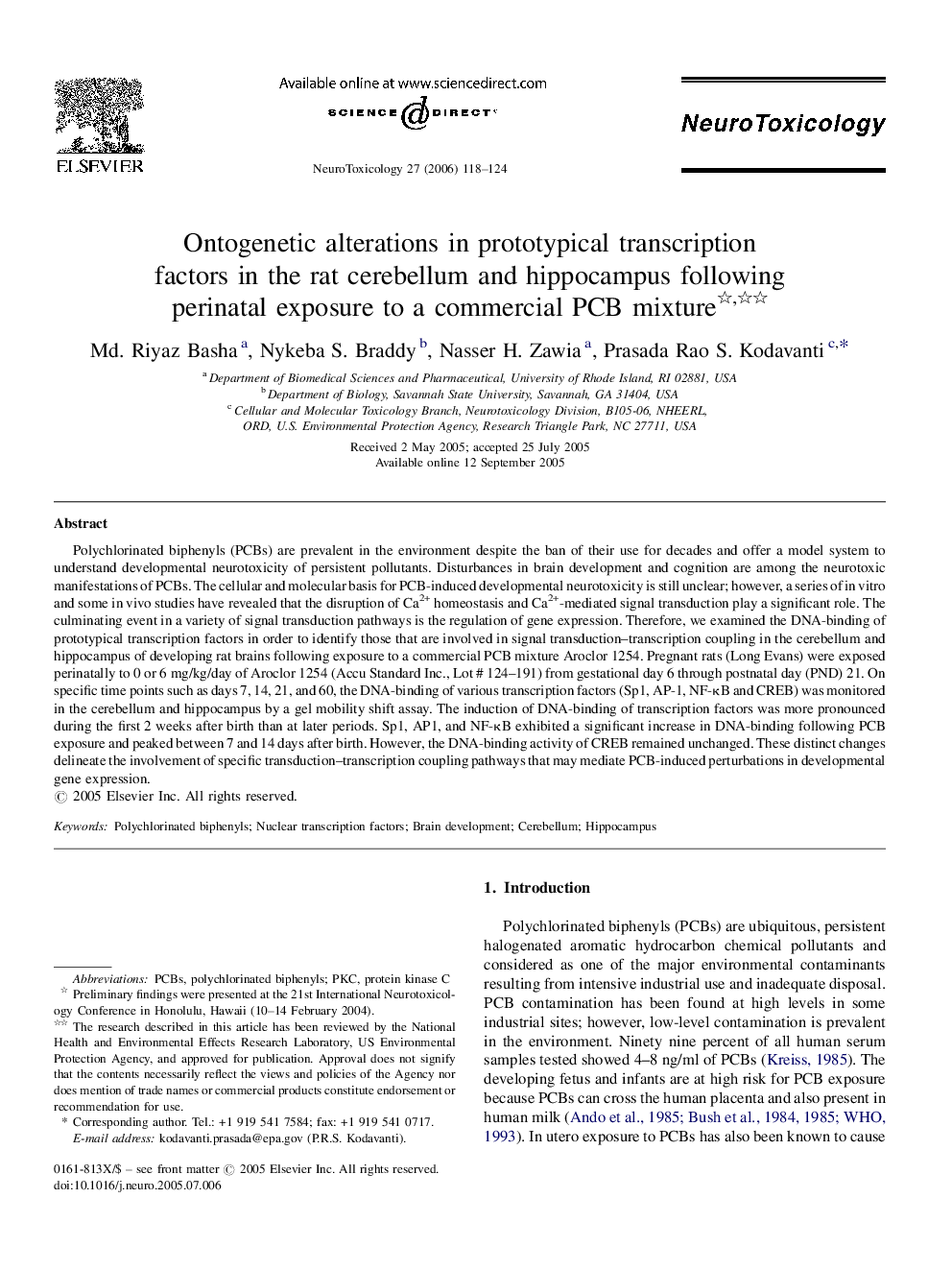| کد مقاله | کد نشریه | سال انتشار | مقاله انگلیسی | نسخه تمام متن |
|---|---|---|---|---|
| 2590792 | 1131772 | 2006 | 7 صفحه PDF | دانلود رایگان |

Polychlorinated biphenyls (PCBs) are prevalent in the environment despite the ban of their use for decades and offer a model system to understand developmental neurotoxicity of persistent pollutants. Disturbances in brain development and cognition are among the neurotoxic manifestations of PCBs. The cellular and molecular basis for PCB-induced developmental neurotoxicity is still unclear; however, a series of in vitro and some in vivo studies have revealed that the disruption of Ca2+ homeostasis and Ca2+-mediated signal transduction play a significant role. The culminating event in a variety of signal transduction pathways is the regulation of gene expression. Therefore, we examined the DNA-binding of prototypical transcription factors in order to identify those that are involved in signal transduction–transcription coupling in the cerebellum and hippocampus of developing rat brains following exposure to a commercial PCB mixture Aroclor 1254. Pregnant rats (Long Evans) were exposed perinatally to 0 or 6 mg/kg/day of Aroclor 1254 (Accu Standard Inc., Lot # 124–191) from gestational day 6 through postnatal day (PND) 21. On specific time points such as days 7, 14, 21, and 60, the DNA-binding of various transcription factors (Sp1, AP-1, NF-κB and CREB) was monitored in the cerebellum and hippocampus by a gel mobility shift assay. The induction of DNA-binding of transcription factors was more pronounced during the first 2 weeks after birth than at later periods. Sp1, AP1, and NF-κB exhibited a significant increase in DNA-binding following PCB exposure and peaked between 7 and 14 days after birth. However, the DNA-binding activity of CREB remained unchanged. These distinct changes delineate the involvement of specific transduction–transcription coupling pathways that may mediate PCB-induced perturbations in developmental gene expression.
Journal: NeuroToxicology - Volume 27, Issue 1, January 2006, Pages 118–124